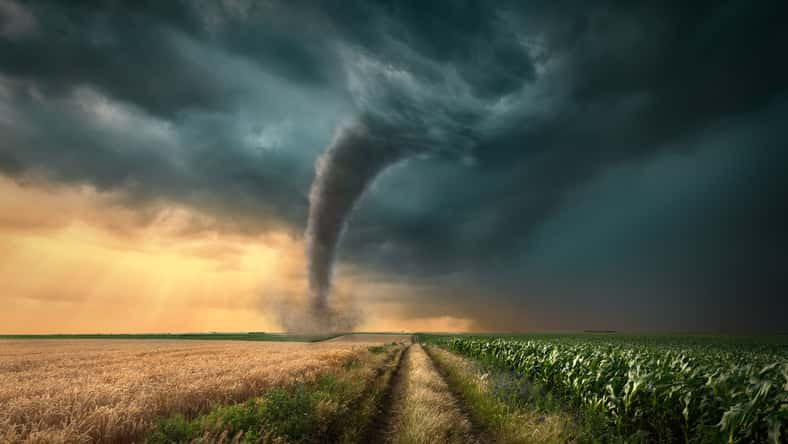Most Violent Tornadoes Are Generated By Supercell Thunderstorms, A Unique Form Of Storm That Can Cause Catastrophic Consequences

Of all the destructive powers in our world, none can quite measure up to nature’s fury. We’ve all heard of or maybe even had firsthand experience with a natural disaster of some sort.
Whether it was the ground shaking and breaking apart to swallow up buildings, hot lava spewing from volcanoes, towering waves that can drown entire cities, and twisters that descend menacingly from the clouds at shocking speeds, tearing up everything in their paths, these events remind us that we humans are at the mercy of natural forces.
Tornadoes remain among one of the most elusive, powerful, and catastrophic phenomena on Earth. A tornado is a violently rotating column of air that develops from a thunderstorm and is in contact with the ground’s surface. For years, researchers have been trying to figure out just how exactly they form.
Scientists have been studying tornadoes since the mid-twentieth century, so they’ve managed to collect enough information to determine what criteria are needed for a twister to spring up.
Most violent tornadoes are generated by supercell thunderstorms. Supercells are unique from all other types of thunderstorms since they contain a strongly rotating updraft called a mesocyclone.
The rotation comes from wind shear, which causes the wind nearer to the ground to start spinning horizontally. Then, the winds become vertically oriented within an updraft.
Not all supercells form tornadoes, though. In order for a supercell to turn into a tornado, the mesocyclone needs to get the air closer to the ground to start rotating, creating a vortex. The vortex has to be stretched upward, speeding up the twister’s rotation.
In search of more answers, researchers have been chasing storms and studying the atmosphere around them with cutting-edge technology.
The development of Doppler radar around 1945 was groundbreaking for scientists observing thunderstorms.

rasica – stock.adobe.com – illustrative purposes only
The radar was able to detect mesocyclones and capture information about wind and precipitation by giving off pulses of energy and catching the reflected signal. However, radar wasn’t providing all the clues that scientists were looking for.
So, they turned to computer simulations to model the physics of storms. In the 1970s, the first three-dimensional supercell simulations were created.
They helped scientists analyze the structure of the winds and the behavior of storms. As computer technology advanced, more details about supercells entered the picture. Still, the computer resolution wasn’t small enough to narrow in on the tornadoes.
Over time, radar improved as well, and researchers started chasing storms with it, along with other equipment, such as weather balloons.
But they found that the radar and weather balloons couldn’t tell whether a storm would be a tornado or not.
Now, scientists are using new tools to help them decipher why some supercells create tornadoes and others don’t. By flying drones into the storms, they are able to make more thorough observations.
Compared to cars or trucks, drones can take better measurements since they’re at higher altitudes. Additionally, they can travel across different areas of a storm, unlike weather balloons.
But scientists are still unclear about what’s happening near the ground where a tornado forms. Currently, there are a few hypotheses as to where the rotation of winds near the ground comes from.
One theory is that friction is slowing down the air that’s moving near the ground. This causes the spinning air to be turned upright when sucked into an updraft.
Other theories point to the differences in density between cool air and warm air next to each other, which produces an air current that leads to spinning. The models and observations have supported both of these ideas.
With the help of radar, computer simulations, and drones, perhaps scientists will eventually come closer to understanding the formation of a tornado.
Sign up for Chip Chick’s newsletter and get stories like this delivered to your inbox.
More About:News





